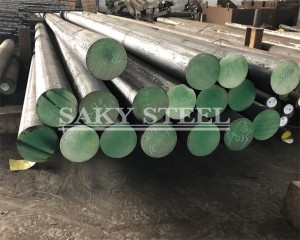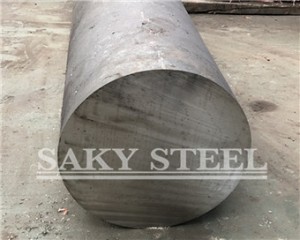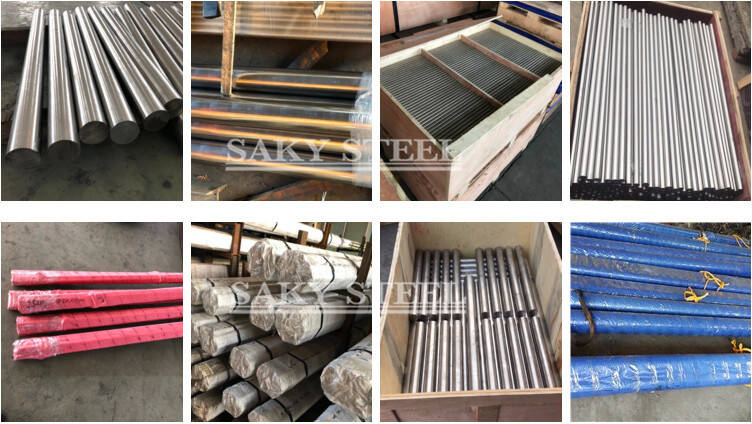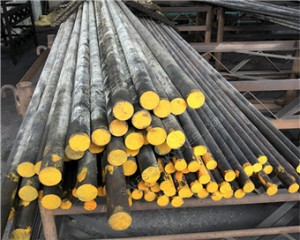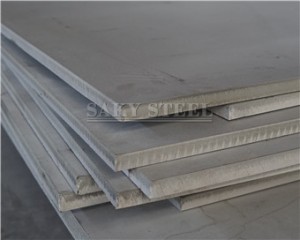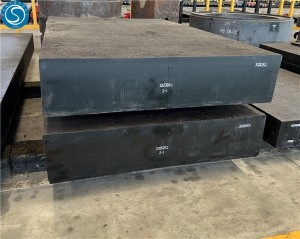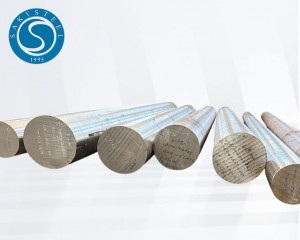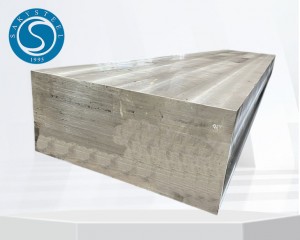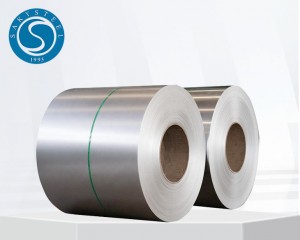Age-Hardening Stainless Steel Forgings Bar
Short Description:
Age-hardening, also known as precipitation hardening, is a heat treatment process that improves the strength and hardness of certain alloys, including stainless steel.The goal of age-hardening is to induce the precipitation of fine particles within the stainless steel matrix, which strengthens the material.
Age-Hardening Stainless Steel Forgings Bar:
Forgings are metal components shaped through a forging process, where the material is heated and then hammered or pressed into the desired form.Stainless steel forgings are often chosen for their corrosion resistance, strength, and durability, making them suitable for various applications, including aerospace, oil and gas, and more.A bar-shaped forging is a specific form of forged metal that typically has a long, straight shape, similar to a bar or rod.Bars are often used in applications where a continuous, straight length of material is needed, such as in the construction of structures or as raw material for additional processing.
Specifications Of Age-Hardening Forgings Bar:
| Grade | 630,631,632,634,635 |
| Standard | ASTM A705 |
| Diameter | 100 – 500mm |
| Technology | Forged,hot rolled |
| Length | 1 to 6 Meters |
| Heat Treatment | Soft Annealed, Solution Annealed, Quenched & Tempered |
Chemical Composition of Forged Bar:
| Grade | C | Mn | P | S | Si | Cr | Ni | Mo | Al | Ti | Co |
| 630 | 0.07 | 1.0 | 0.040 | 0.030 | 1.0 | 15-17.5 | 3-5 | - | - | - | 3.0-5.0 |
| 631 | 0.09 | 1.0 | 0.040 | 0.030 | 1.0 | 16-18 | 6.5-7.75 | - | 0.75-1.5 | - | - |
| 632 | 0.09 | 1.0 | 0.040 | 0.030 | 1.0 | 14-16 | 6.5-7.75 | 2.0-3.0 | 0.75-1.5 | - | - |
| 634 | 0.10-0.15 | 0.50-1.25 | 0.040 | 0.030 | 0.5 | 15-16 | 4-5 | 2.5-3.25 | - | - | - |
| 635 | 0.08 | 1.0 | 0.040 | 0.030 | 1.0 | 16-17.5 | 6-7.5 | - | 0.40 | 0.40-1.20 | - |
Forged Bar Mechanical properties :
| Type | Condition | Tensile Strength ksi[MPa] | Yield Strength ksi[MPa] | Elongation % | Hardness Rock-well C |
| 630 | H900 | 190[1310] | 170[1170] | 10 | 40 |
| H925 | 170[1170] | 155[1070] | 10 | 38 | |
| H1025 | 155[1070] | 145[1000] | 12 | 35 | |
| H1075 | 145[1000] | 125[860] | 13 | 32 | |
| H1100 | 140[965] | 115[795] | 14 | 31 | |
| H1150 | 135[930] | 105[725] | 16 | 28 | |
| H1150M | 115[795] | 75[520] | 18 | 24 | |
| 631 | RH950 | 185[1280] | 150[1030] | 6 | 41 |
| TH1050 | 170[1170] | 140[965] | 6 | 38 | |
| 632 | RH950 | 200[1380] | 175[1210] | 7 | - |
| TH1050 | 180[1240] | 160[1100] | 8 | - | |
| 634 | H1000 | 170[1170] | 155[1070] | 12 | 37 |
| 635 | H950 | 190[1310] | 170[1170] | 8 | 39 |
| H1000 | 180[1240] | 160[1100] | 8 | 37 | |
| H1050 | 170[1170] | 150[1035] | 10 | 35 |
What Is Precipitation Hardening Stainless Steel?
Precipitation hardening stainless steel, often referred to as "PH stainless steel," is a type of stainless steel that undergoes a process called precipitation hardening or age hardening. This process enhances the mechanical properties of the material, particularly its strength and hardness. The most common precipitation hardening stainless steel is 17-4 PH (ASTM A705 Grade 630), but other grades, such as 15-5 PH and 13-8 PH, also fall into this category.Precipitation hardening stainless steels are typically alloyed with elements such as chromium, nickel, copper, and sometimes aluminum.The addition of these alloying elements promotes the formation of precipitates during the heat treatment process.
How is stainless steel precipitation hardened?
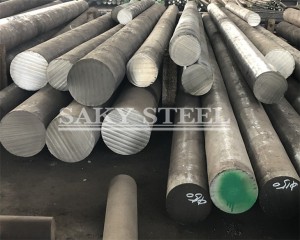
Age hardening stainless steel involves a three-step process. Initially, the material undergoes a high-temperature solution treatment, where solute atoms dissolve, forming a single-phase solution. This leads to the formation of numerous microscopic nuclei or "zones" on the metal. Subsequently, rapid cooling occurs beyond the solubility limit, creating a supersaturated solid solution in a metastable state.In the final step, the supersaturated solution is heated to an intermediate temperature, prompting precipitation. The material is then kept in this state until it undergoes hardening. Successful age hardening requires the alloy composition to be within the solubility limit, ensuring the effectiveness of the process.
What are the types of precipitation hardened steel?
Precipitation-hardening steels come in various types, each tailored to meet specific performance and application requirements. Common varieties include 17-4 PH, 15-5 PH, 13-8 PH, 17-7 PH, A-286, Custom 450, Custom 630 (17-4 PH Mod), and Carpenter Custom 455. These steels offer a combination of high strength, corrosion resistance, and hardness, making them suitable for diverse industries such as aerospace, automotive, medical, and chemical processing. The choice of precipitation-hardening steel depends on factors like application environment, material performance, and manufacturing specifications.
Packing:
1. Packing is quite important especially in a case of international shipments in which consignment pass through various channels to reach the ultimate destination, so we put special concern regarding packaging.
2. Saky Steel's pack our goods in numerous ways based on the products. We pack our products in multiple ways, such as,
